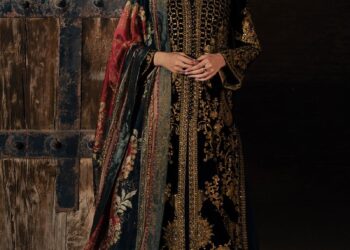Ethnic Wear Clothes – Timeless Styles for Every Occasion
You know that feeling when a kurta fits just right and the dupatta falls like a dream? Last week I was shortlisting Ethnic Wear Clothes for Navratri nights and Diwali card parties, and trust me, soft cotton-silk with a hint of zari saved me from the Delhi humidity and the dandiya twirls alike (festive season’s in full swing from late September into October this year).
But here’s the thing: with wedding season kicking off from late October and peaking through Feb-March, versatile Ethnic Wear Clothes beat impulse buys every time—think a ₹1,299–₹2,499 everyday kurta set, a ₹3,500-ish gota patti suit for office parties, and one rich saree or lehenga for that cousin’s sangeet (because the ceremonies keep stacking up).
I remember when I grabbed a bright fuchsia suit right before Diwali and realized the fabric scratched—never again; now I check lining and hems first, especially with all the Navratri garba nights and Diwali
What Are Ethnic Wear Clothes?
Ethnic Wear Clothes are traditional outfits rooted in our culture—think sarees, salwar suits, kurtas, lehengas—styled for today’s life without losing their heritage feel. They carry regional identity (like a Banarasi’s sheen or a Kota cotton’s breathability) and show up everywhere from Diwali poojas to office parties and weddings, blending craft, comfort, and ceremony in one closet-friendly category.
What it really means (in real life)
Everyday elegance: For Mondays in October, a soft cotton kurta set feels cool, moves easy, and still looks “put-together” for client calls (cotton breathes better, so no mid-day meltdown).
Festive sparkle: Come Diwali, sarees and lehengas dial up the glow—zari borders, rich silks, twirl-friendly Anarkalis—perfect for puja to card nights without costume stress (been there, over-pinned a pallu once).
Wedding-ready: Silk or chiffon drapes keep photos timeless; chiffon is airy, flowy, and sits beautifully under lights, while silk brings that heirloom shine (honestly though, chiffon saves the shoulders during sangeet).
Budget sense: What I’ve learned is: invest in one statement lehenga, then mix kurtas, palazzos, and dupattas for fresh looks under a sensible budget—versatile pieces stretch wardrobes and pay back fast.
Style tip from experience: Choose fabrics by weather and event—cotton/linen for day errands, georgette/chiffon for movement, silk/brocade for big nights (because sweat and sequins don’t mix).
But here’s the thing: If Ethnic Wear Clothes have to work hard and feel amazing, shop curated pieces from our store—easy fits, honest pricing, and fabrics picked for Indian seasons (text for a quick size-and-fabric suggestion before Friday’s event).
Why Ethnic Wear Never Goes Out of Fashion
Ethnic Wear Clothes have this quiet magic: they make an ordinary Tuesday feel festive and a big day feel unforgettable, every single time. Last month, I discovered my old indigo kurta still nails office-to-dinner (paired it with block heels and a messy bun—felt comfy yet polished), and that’s the thing—these pieces age like good stories, not trends.
What never changes
Culture you can wear: Sarees, kurtas, and lehengas carry memory, craft, and identity, so they outlive trends by design (and yes, that’s why mom’s silk still slaps).
Versatile by default: Dress a kurta up with jhumkas or keep it breezy with flats—same piece, totally different vibe.
Comfort that wins daily
Fabric matters: Organic cotton, linen, and handloom blends breathe in Indian weather, so no “why is this sticking to me?” moments in the metro.
Movement-friendly: Pre-draped sarees and easy silhouettes make errands, shoots, and festivals actually doable (been there, chased a cab in an anarkali).
Trends keep it fresh
Fusion fun: Blazers with lehengas, belts on sarees, crop-top blouses—tradition gets pocketed with modern tweaks, so nothing feels dated.
Jewel tones rule: Emerald, sapphire, ruby—instant glow-up for festive pics and Reels, especially under warm lights.
Smart shopper notes
Buy for fabric and fit first, then drama—handloom cotton for weekdays, silk or georgette for events (trust, it saves returns).
Pick mixable sets—co-ords, breathable kurtas, a dupatta that works across outfits (my beige organza dupatta has paid for itself thrice).
Honestly, though, the reality is Ethnic Wear Clothes stay because they feel like home and still photograph like a dream—so start with breathable kurtas, a jewel-tone set, and one fusion saree from the store, then build out as seasons change.
Different Types of Ethnic Wear Clothes for Women
Ethnic Wear Clothes have a way of turning an ordinary day into a little celebration—last Diwali I slipped into a mul-cotton kurta set for a 10-hour shoot and still felt fresh by dinner, which honestly shocked me (in the best way). But here’s the thing: picking the right style and fabric matters more than hype, especially for busy days, office-to-dinner plans, and those quick “need-to-look-put-together” moments we all face.
Women: what actually works
Sarees that move with life: lightweight chiffon, georgette, or organza are perfect for long hours; pre-stitched and ruffle sarees are trending and save time (trust me, I’ve changed in the cab before an event).
Kurta/suit sets for daily wins: straight or A-line kurtas with palazzos feel breathable and neat for desk-to-dinner; add a soft dupatta when the plan turns “festive” after 6 pm.
Lehengas, but lighter: georgette and linen-mix lehengas are easier to carry than heavy velvet—pastels are having a moment and photograph beautifully under warm lights.
Anarkali and ethnic dresses: great for “one-and-done” outfits when time is tight; look for flowy georgette to avoid bulk (been there, overheated that).
Fabric tips from hard lessons
Summer heroes: cotton, linen, georgette for breathability (no more “melting” at outdoor functions).
Handle with care: chiffon/georgette—hand wash, no wringing; silk—dry clean to keep the sheen intact.
Honestly, though, what I’ve learned is this: build a small, wearable capsule—one airy saree, two everyday kurta sets, one statement dupatta, and a versatile festive set—and rotate with confidence (it’s saved me from so many last-minute panic buys). For the ecommerce store picks, lean into lightweight sets and pre-stitched sarees—they’re the quiet heroes of Ethnic Wear Clothes that make getting ready feel easy, even on chaotic days.





